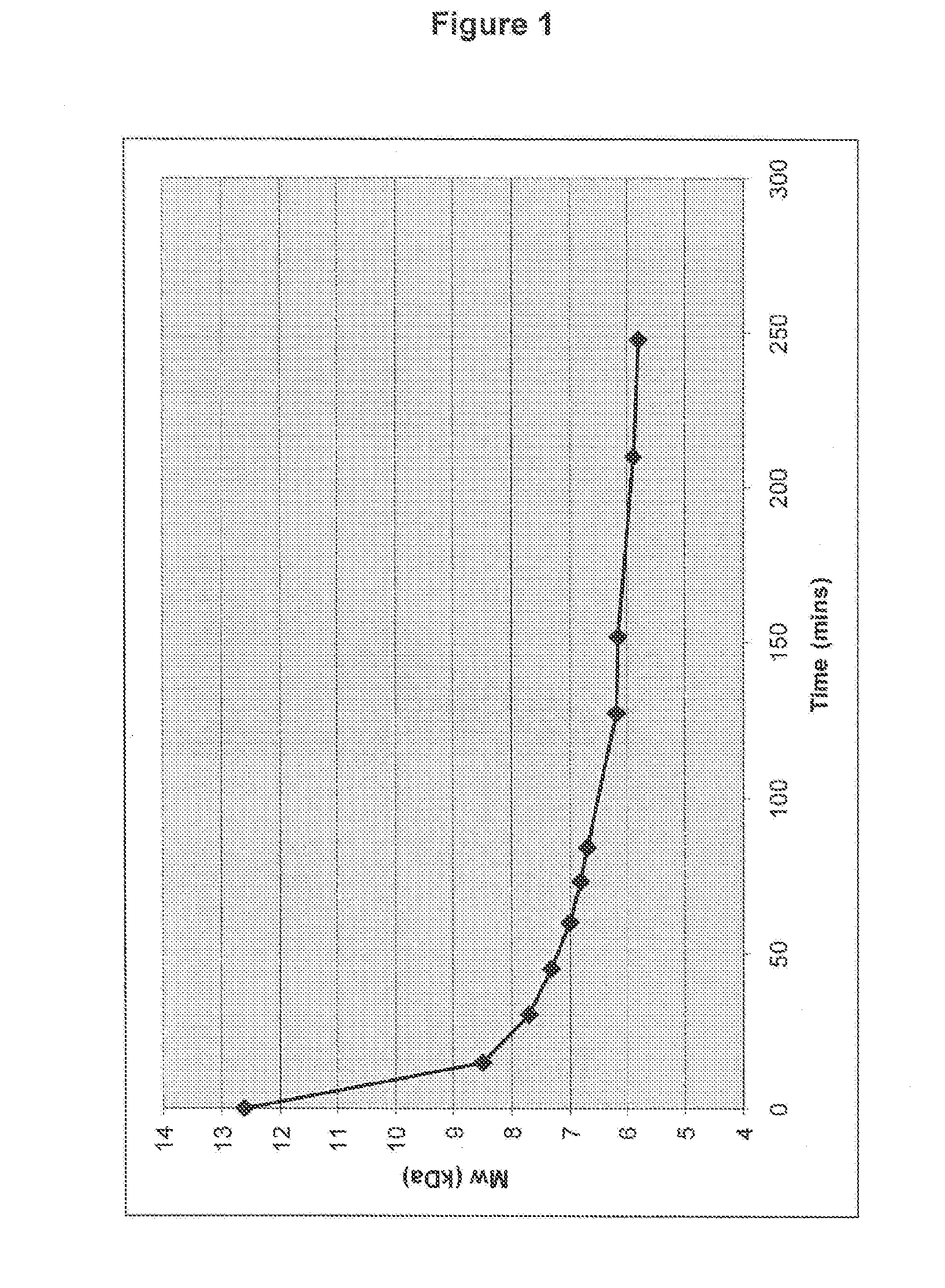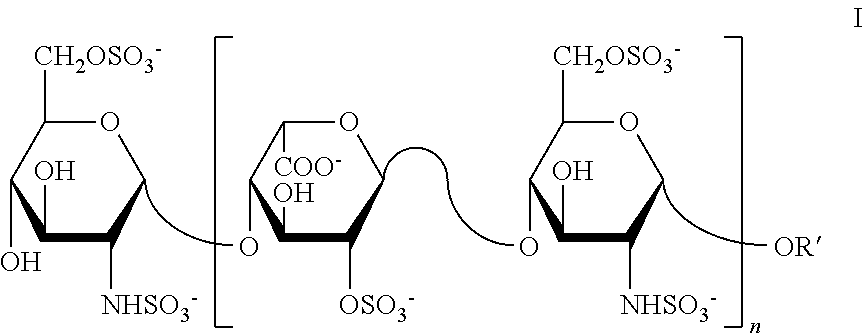New processes for the production of chemically-modified heparins
a technology of chemical modification and heparin, which is applied in the field of new processes, can solve the problems of unsuitable heparin and lmwh for treating other medical conditions, unsuitable heparin and lmwh for preventing or treating such diseases, and difficult to predict the effects of unfractionated heparin, etc., and achieves reduced heparin derivative molecular weight, reduced heparin derivative toxicity, and low anticoagulant activity
- Summary
- Abstract
- Description
- Claims
- Application Information
AI Technical Summary
Benefits of technology
Problems solved by technology
Method used
Image
Examples
example 2
[0206]The process was performed under three sets of conditions (Examples 2a, 2b and 2c), using two different batches of unfractionated heparin (referred to herein as Batch A and Batch B), under the following general conditions.
[0207]Oxidation of Glucuronic and Iduronic Acid (Residues), Deletion of Anticoagulant Activity
[0208]A quantity of about 25 grams of Heparin was dissolved in purified water to obtain a 15% w / v solution. Then 6.25 gram of sodium metaperiodate (NalO4) was added to the process solution and the pH was the adjusted to 4.9-5.0. The reactor was protected from light. The process solution was reacted for 22 hours with constant stirring maintenance of the temperature at 15° C., after which the temperature was reduced to 5° C. during the last two hours. The total reaction time was 24 hours.
[0209]Depolymerisation of Polysaccharide Chains By an Alkaline Beta Elimination Process
[0210]While maintaining the temperature at 5-10° C., a NaOH solution was added until a pH of 11-11...
example 2a
[0222]Example 2a was reacted in the depolymerisation reaction at a pH of 11 using Batch A of heparin.
SampleMw (kDa)Time (min)112.6028.51537.73047.34557.06066.87376.78486.212796.1152105.9210115.8248
example 2b
[0223]Example 2b was reacted in the depolymerisation reaction at a pH of 11.5 using Batch A of heparin.
SampleMw (kDa)Time (min)113.0027.31536.73046.44556.26066.17376.08485.712795.6152105.4210115.3248
PUM
| Property | Measurement | Unit |
|---|---|---|
| average molecular weight | aaaaa | aaaaa |
| molecular weight | aaaaa | aaaaa |
| molecular weight | aaaaa | aaaaa |
Abstract
Description
Claims
Application Information
 Login to View More
Login to View More - R&D
- Intellectual Property
- Life Sciences
- Materials
- Tech Scout
- Unparalleled Data Quality
- Higher Quality Content
- 60% Fewer Hallucinations
Browse by: Latest US Patents, China's latest patents, Technical Efficacy Thesaurus, Application Domain, Technology Topic, Popular Technical Reports.
© 2025 PatSnap. All rights reserved.Legal|Privacy policy|Modern Slavery Act Transparency Statement|Sitemap|About US| Contact US: help@patsnap.com



